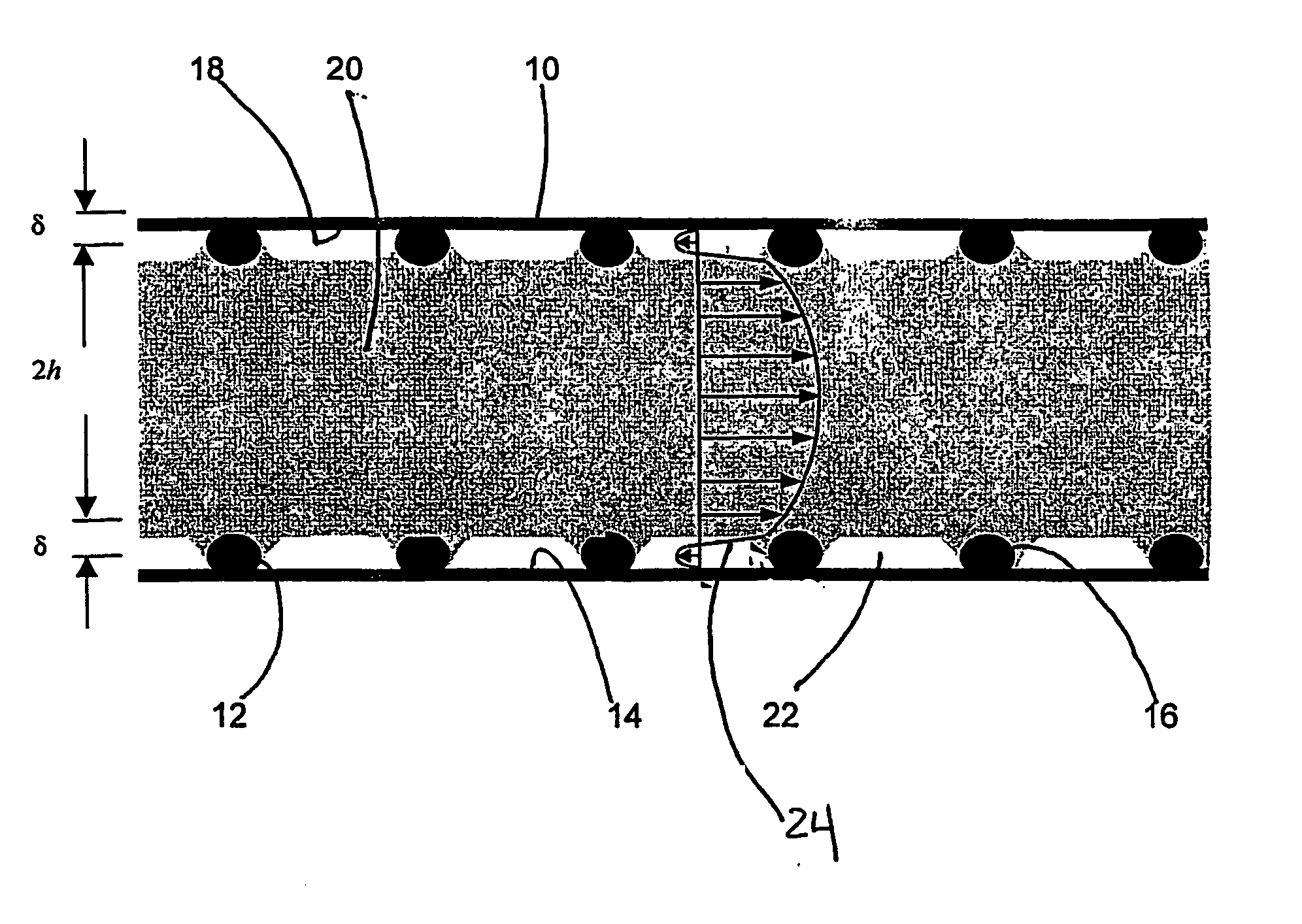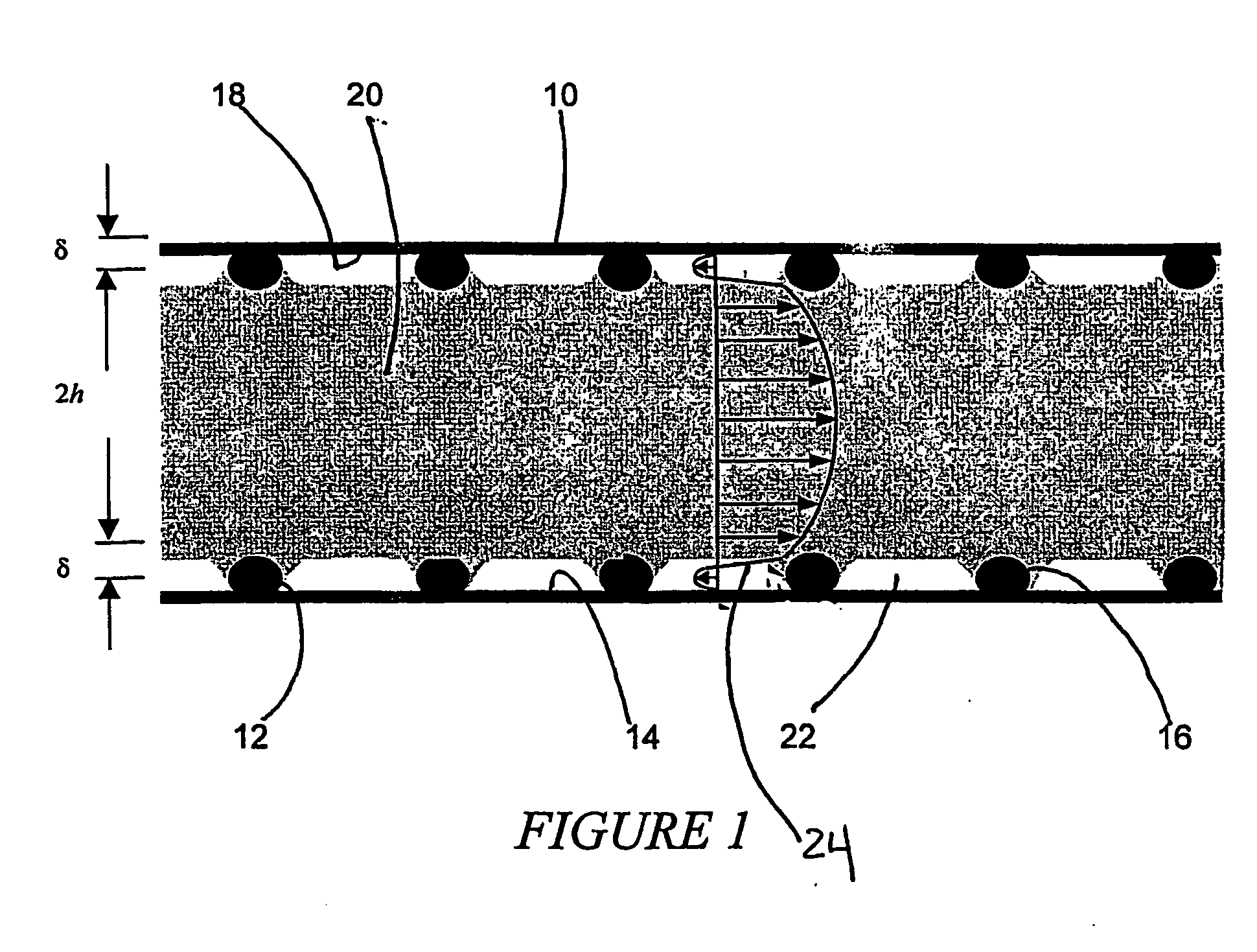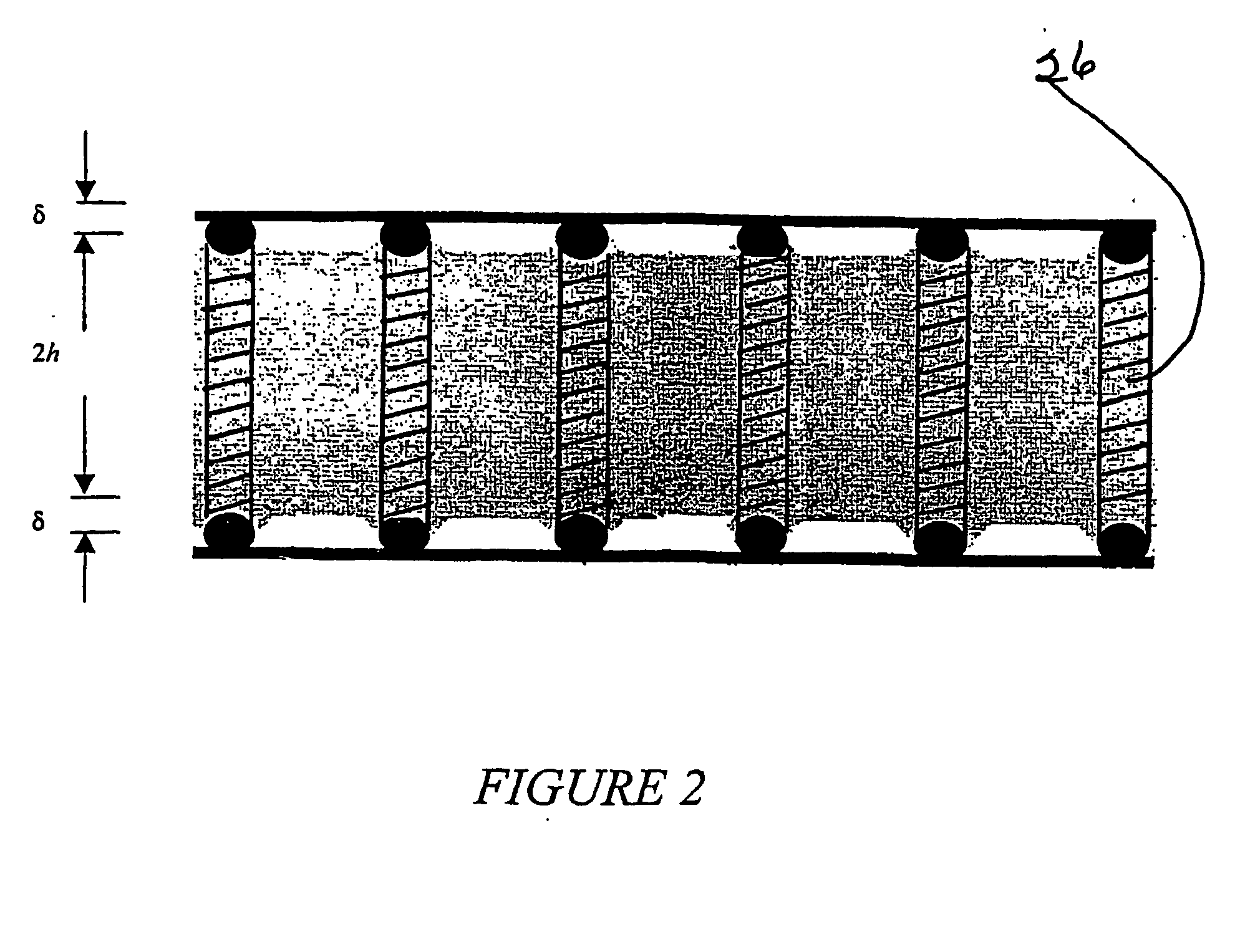Microchannels for efficient fluid transport
a microchannel and fluid technology, applied in the field of fluid transport and microchannels, can solve the problems of difficult, if not impossible, to draw fluid out of the tube, and difficult, if not impossible, to draw fluid into the tube, so as to reduce the viscosity of the microchannel, enhance fluid transport, and reduce the viscosity. the effect of resistan
- Summary
- Abstract
- Description
- Claims
- Application Information
AI Technical Summary
Benefits of technology
Problems solved by technology
Method used
Image
Examples
example
This example, using substrates with flat surfaces, shows how to form a super-hydrophobic surface having hydrophobic peaks and valleys. Basically, polycrystalline alumina substrates were dip-coated in dilute suspensions formed with dispersed, nano-silica particles. The fractional surface coverage of the alumina substrate was varied between ≈0.05 to ≈0.4 by changing concentration of particles in the silica slurry. After a heat treatment to partially sinter the particles to the surface, the surface was made hydrophobic by a reaction with a solution containing fluorosilane molecules.
The ‘as received’ silica slurry (Snowtex-OL, Nissan Chemicals, Tokyo, 20 wt %, particle size 45±5 nm, pH 3±1) was diluted with deionized water to concentrations as low as 0.025 wt %. The pH was adjusted to 6.0±0.2 with tetramethylamonium hydroxide (TMAOH) to produce a well-dispersed slurry. At pH 6, the silica particles were expected to be attractive to the alumina substrates.
Polycrystalline alumina sub...
PUM
 Login to View More
Login to View More Abstract
Description
Claims
Application Information
 Login to View More
Login to View More - R&D
- Intellectual Property
- Life Sciences
- Materials
- Tech Scout
- Unparalleled Data Quality
- Higher Quality Content
- 60% Fewer Hallucinations
Browse by: Latest US Patents, China's latest patents, Technical Efficacy Thesaurus, Application Domain, Technology Topic, Popular Technical Reports.
© 2025 PatSnap. All rights reserved.Legal|Privacy policy|Modern Slavery Act Transparency Statement|Sitemap|About US| Contact US: help@patsnap.com



